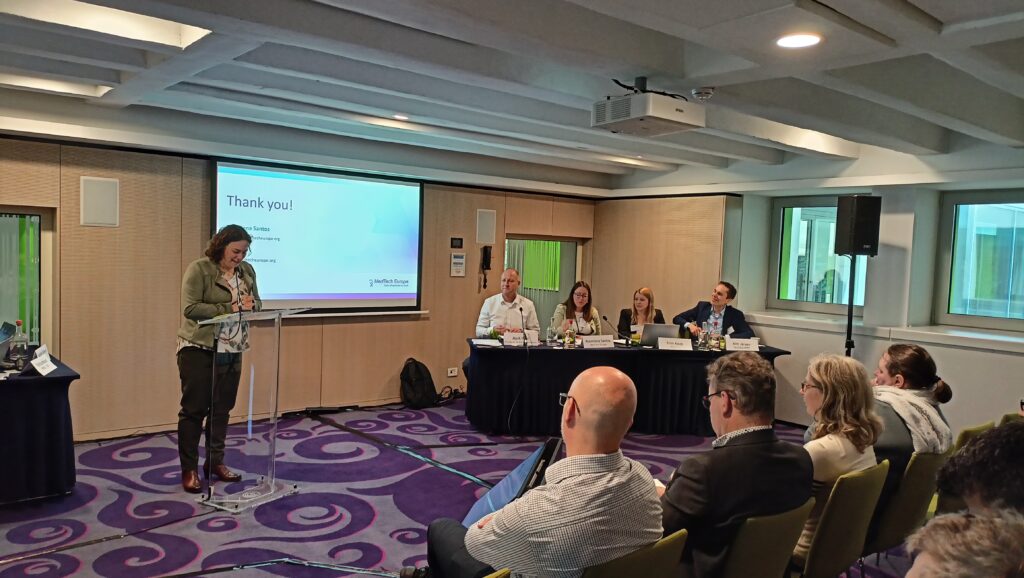Is your use not listed in the universal PFAS restriction proposal? Consider it banned.
The justification behind the Universal PFAS Restriction proposal according to Dr Audun Heggelund of the Norwegian Environment Agency is that PFAS are widely present in environment and humans, and are considered persistent: “In 2020 we reached 75000 tonnes of emissions. Without a restriction this would build up to 4.5 million tonnes over 30 years”, he explained at the FPP4EU Collaboration Platform of 30 March 2023.
On 22 March, ECHA launched the public consultation to gather inputs around the Universal PFAS Restriction Proposal. That is why Marco Mensink, Director General of Cefic called on participants to: “Use the presence of the authorities present today to get as much intelligence as possible, to help them fill the gaps where needed, within the 6-month deadline. This is called a collaboration platform for good reason.”
Dr Heggelund agreed that ECHA’s evaluation can only be based on the materials they receive and emphasised the importance of well-substantiated scientific evidence. It is important to keep in mind that the starting point of the REACH restriction is a ban. This means that no specific mention in the proposal of a certain use, automatically means a ban.
Downstream users are doing their homework
Downstream users have been collecting data to apply for exemptions to prevent some far-reaching consequences of the current proposal. For instance, most electronics will be forced from the market given that no exemptions have been granted and the transition period is short. Digital Europe has currently identified 60+ categories of uses in electronics that would be impacted, and are still discovering new ones. For Lithium-ion batteries no alternatives are currently identified, and for other applications a full redesign of the product would be needed to replace PFAS.
Where the medical sector relies on electronics and other components from supply chains to function, PFAS is also used in many medical technologies required for life-saving procedures. Many of these devices rely on PFAS for their biocompatibility, chemical and heat resistance, and their lubrication properties. The alternatives identified so far are quite often another PFAS.
Where the textile sector is concerned, some exemptions have been proposed towards personal protective equipment. Yet these exemptions are not sufficient to cover items such as bullet proof vests, military wear, and surgery gowns. These “technical textiles” mostly use PFHxA, which is the main technically feasible and available alternative to already restricted C8 that can deliver the needed safety and performance standards. The understanding is that already existing regulations will not be affected by the PFAS restriction, but what about the ongoing ones such as the one for PFHxA?
Where high persistency is the key concern underpinning the restriction proposal, it is exactly the trait required by the sealants industry in certain uses. For instance, you do not want gas to leak from a pipe. Alternatives usually do not deal with the harsh circumstances at the level PFAS can. Dr Heggelund responded that this is exactly the type of information they need: where PFAS are needed and why.
What does industry have to say?
Plastics Europe’s Fluoropolymer Product Group (FPG), and the Cefic sector groups EFCTC (European FluoroCarbon Technical Committee) and FPP4EU (FluoroProducts and PFAS for Europe) call on downstream users to respond to the public consultation by sharing examples similar to the ones presented. The associations themselves will also submit data directly based on studies undertaken.
Members of FPP4EU do not question that regulatory action around PFAS is needed. Instead, the group calls on EU policymakers to focus on six actions when revisiting the proposal:
- Identify PFAS uses to avoid supply chain disruptions and unintentional elimination of key applications;
- Prevent a ban on the use of critical PFAS-containing pieces of equipment in industrial plants;
- When assessing PFAS, keep in mind that they differ from one another;
- Consider the drive for a competitive, resilient, green, sustainable and strategically secure Europe;
- Address economic impacts along the entire value chain; and
- Robustly review the enforceability of the proposal.
More in FPP4EU’s position paper. Meanwhile, all industry representatives were grateful to the authorities for having taken the time to provide clarifications around the restriction proposal and listen to their concerns. The event was beneficial to all stakeholders present.

